When most people think of fruit, they think of summer — full of sweet watermelon, flavorful strawberries, tart blueberries, and juicy peaches. The truth is, there are a large variety of fruits in season every month of the year.
Don’t fret if you are unfamiliar with what seasonal fruits are available now or in the future. Our guide will help you choose the freshest, ripest produce for your family and expand your produce knowledge on what fruits are in season right now. 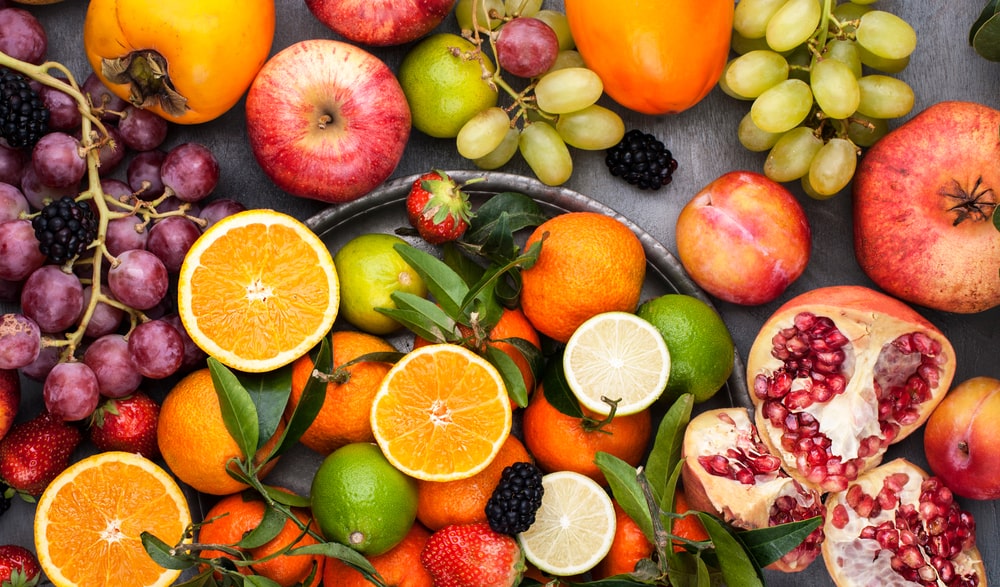
Why Should I Eat Fruits In Season?
Seasonal fruits are any type of produce that are bought/consumed shortly after they have been picked/harvested. Fruits will be selected for harvesting during the time they are at their peak ripeness (aka, their designated “best” season).
While many fruits can be found on store shelves year-round, there are a number of advantages to eating fruit when it is in its best season. Here are a few reasons to buy fruit in season:
- Save Money – In-season fruit is cheaper because it takes less work for farmers to grow. You may be able to get a “local” pineapple in Pennsylvania, but it likely took a lot of heaters and lamps to grow it.
- Get Tastier Fruit – Fruit tastes better when it is ripe and ready to be picked. Out-of-season growing can create narrow margins for farmers, making them pick fruits prematurely in order to turn a profit.
- Get More Nutrients – Eating fruit in season will likely cause you to eat a wider variety of fruits. Not only is this good for your wallet and your local farming community, it also means a wider variety of micronutrients for your body.
There is a high chance that there is a local farmers market in your area, and they will certainly have a revolving selection of fruits by season for you to explore. Not only are they fun places to explore and try new foods, but they allow you to support local growers/businesses.
So if you’re feeling adventurous, go out and find your nearest farmer’s market and pick out some tasty produce!
How To Choose Ripe Fruits
Fruits will let you know when they are ready to eat. Here are a few easy ways to tell if you’re picking the best piece of fruit from the bin.
Color
Color is one of the easiest ways to detect if fruit is ripe and ready to eat. If the color of the fruit in question is dull or unnatural, it probably wasn’t picked at the right time, or isn’t ready to be eaten yet.
Bright, vibrant colors are sure signs that the fruit has reached its peak ripeness. Some fruits (like bananas and pears) will continue to ripen after they have been picked, so be sure to pay attention to their color as it changes.
(As a general rule, don’t consume fruits that are green when they are normally other vibrant colors; that’s a sure sign that they are still ripening.)
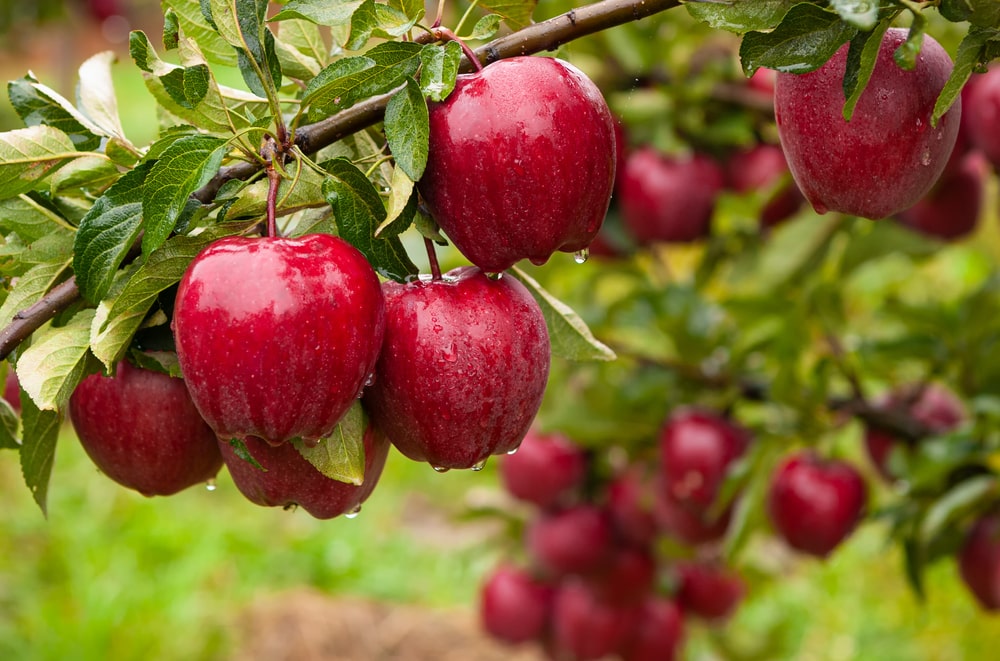
Feel
While texture and firmness will vary by fruit, ripe fruit is typically firm, but has a little give when squeezed. The skin should generally feel smooth (with no signs of bruising or punctures), and not have any soft spots, which can indicate bruising under the skin.
Fruit should also feel dense and substantial for its size. This is especially true for citrus fruits, which contain far more juice when ripe. If you’re buying citrus just for its zest, go for a lighter-feeling lemon or lime, which will contain less juice and be easier to zest.
Smell
If the smell of the fruit in your hand doesn’t make your mouth water, it probably isn’t ready to be eaten just yet.
Ripe fruit should be light and fragrant, especially around the stem. If you find the smell to be overwhelming or lacking in any way, it can be a sign of over-ripeness or not being ready for consumption yet.
Cooking With Fruit
If the extent of your experience cooking with fruit is cranberry sauce at Thanksgiving, you’re missing out! Here are some quick and easy ideas for including fruit in your cooking:
- Add fruit to salads. From fresh strawberries to grilled peaches and pineapple, fruit can add the perfect hint of sweetness to an otherwise earthy salad.
- Dive into the world of dressings. One less common way to cook with fruit is to try your hand at a fruity vinaigrette. This recipe only takes 10 mins, and you probably already have most of the ingredients on hand.
- Chop fruit evenly. While the style of chopping will depend on the recipe, the more evenly you chop your fruit, the more evenly it will poach, grill, or fry.
- If you’re nervous about cooking with fruit, try a no-bake recipe, like a mango salsa or this colorful melon pasta salad. Or if you’re looking to get creative, try innovative recipes like apple butter.
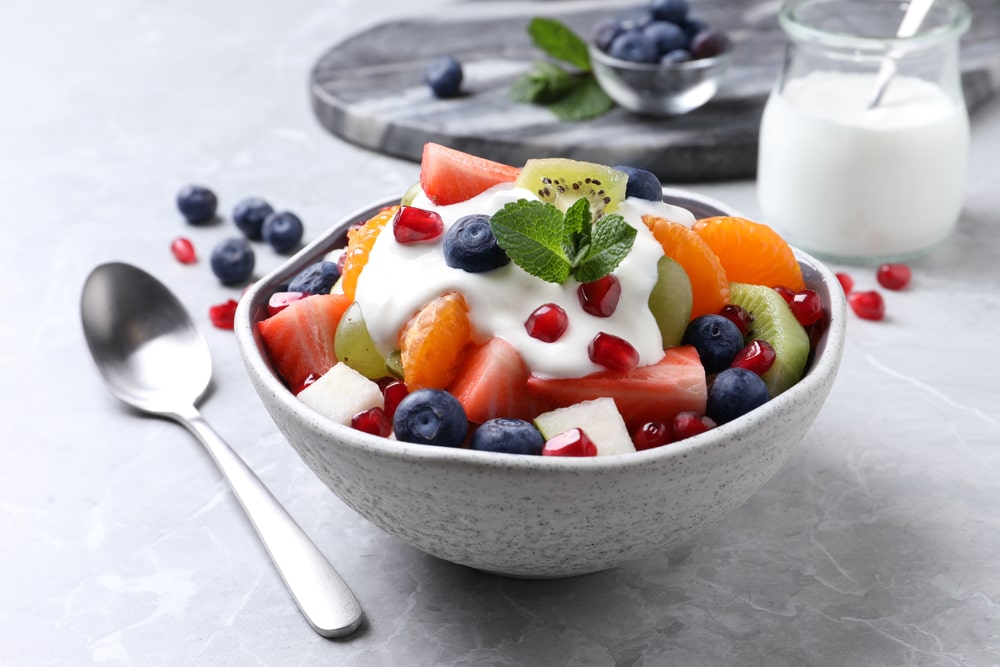
Baking With Fruit
Adding fruit into your baked goods can be a great way to add nutritional value to an otherwise sugary dessert or snack. Here are a few tips for including fruit in your baked goods:
- Prevent food waste by baking with fruit. Those brown bananas and bruised apples will make delicious banana bread and apple pie, and no one will be the wiser that the produce inside it almost went into the trash.
- Prepare your fruit properly for baking. While it may be tempting to chop your fruit roughly into larger pieces, cutting it into smaller pieces will prevent it from sinking to the bottom and sticking. You can also coat your fruit pieces in flour or cocoa powder (where appropriate) to prevent them from sinking in your batter.
- Avoid extra moisture. If you are using a juicy fruit like peaches, make sure to pat them dry before adding them in. This will prevent your batter from being too wet and becoming sticky or tough once baked.
- Use fruit as a garnish. Saving a few slices of fruit for the top of a bread or cake will take your baking with fruit to the next level.
- Get creative. Breads, cakes, and pies are simple ways to bake with fruit, but don’t be afraid to try something completely new! From fruit leather to homemade jams, the possibilities are endless! If you’re not ready to tackle making your own jam, check out Sara’s Jar Goods for jams in every flavor! And if you’re looking for tips on storage, check out our blog on Amish canning recipes.
Available Fruits By Season
So what fruits are in season right now? Well, we’ve compiled a list below of fruits that are/will be in season. Whether you’re more of a classic Summer fruit lover, or interested in trying some Winter produce, you can find your favorites (old and new) here.
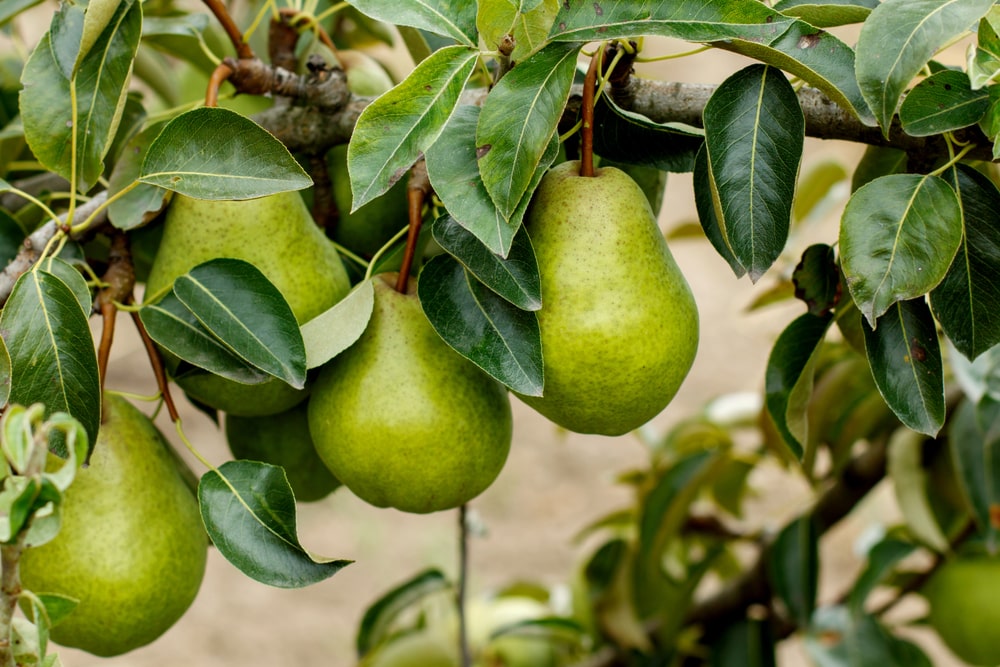 Winter Fruits in Season
Winter Fruits in Season
While Winter may not be your first thought when it comes to fruit, Pennsylvania boasts some unique Winter fruits. Clementines are a popular citrus fruit sold country-wide that are grown right here in PA. Here are some other seasonal fruits to try this Winter:
Fruit in Season December
- Apples
- Clementines
- Dates
- Grapefruit
- Kiwi
- Pears
- Pomegranates
- Red Bananas
- Tangerines
Fruit in Season January
- Apples
- Clementines
- Grapefruit
- Kiwi
- Oranges
- Pears
- Red Bananas
- Tangerines
Fruit in Season February
- Apples
- Clementines
- Grapefruit
- Kiwi
- Oranges
- Passionfruit
- Pears
- Pomegranates
- Red Bananas
- Tangerines
Spring Fruits In Season
As Winter thaws, many of us turn away from soups and chilis and turn toward fresh Spring salads and lighter meals. These Spring seasonal fruits are great cooked as well as on their own as a snack or side:
Fruit in Season March
- Apricots
- Limes
- Mango
- Oranges
- Pineapple
- Rhubarb
- Strawberries
Fruit in Season April
- Apricots
- Honeydew Melons
- Limes
- Mango
- Oranges
- Pineapple
- Rhubarb
- Strawberries
Fruit in Season May
- Apricots
- Honeydew Melons
- Limes
- Mango
- Oranges
- Pineapple
- Rhubarb
- Strawberries
- Tomatoes
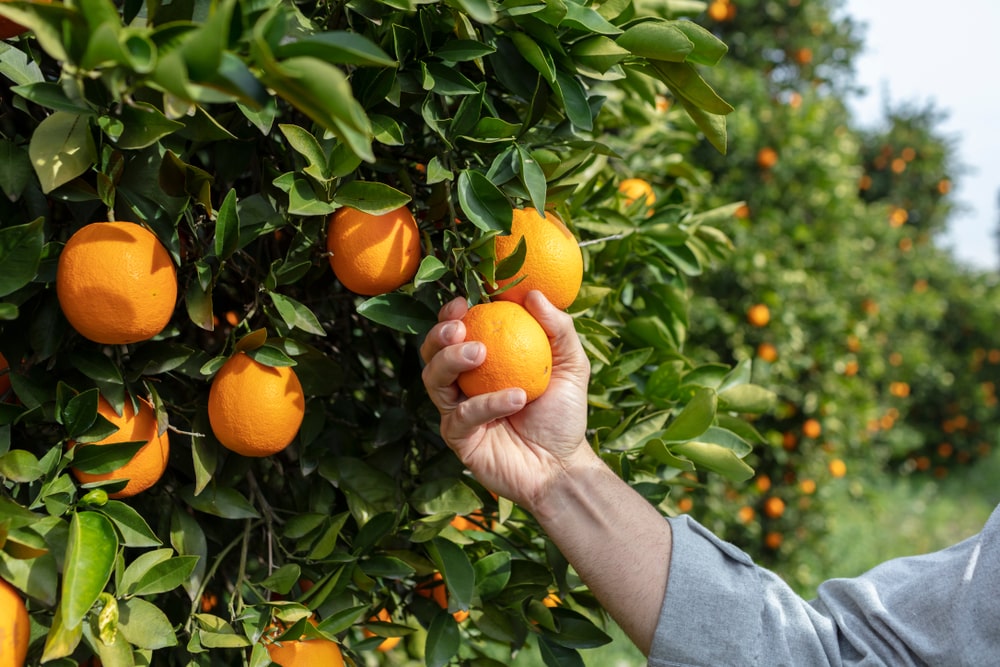
Summer Fruits In Season
Summer is the time of year we associate mostly with fresh fruit — and for good reason! There is a huge variety of seasonal fruit available to us locally in the Summer months. See how many of these Summer fruits you can try raw, baked, or cooked:
Fruit in Season June
- Apricots
- Blackberries
- Blueberries
- Cantaloupes
- Cherries
- Grapefruit
- Honeydew Melons
- Limes
- Nectarines
- Passionfruit
- Peaches
- Plums
- Pears
- Raspberries
- Sugar Plums
- Strawberries
- Tomatoes
- Watermelon
Fruit in Season July
- Apricots
- Blackberries
- Blueberries
- Blackcurrants
- Cantaloupes
- Cherries
- Grapefruit
- Honeydew Melons
- Limes
- Nectarines
- Passionfruit
- Peaches
- Plums
- Pears
- Raspberries
- Sugar Plums
- Strawberries
- Tomatoes
- Watermelon
Fruit in Season August
- Apricots
- Blackberries
- Blueberries
- Blackcurrants
- Cantaloupes
- Cherries
- Grapefruit
- Honeydew Melons
- Limes
- Nectarines
- Passionfruit
- Peaches
- Plums
- Pears
- Sugar Plums
- Strawberries
- Tomatoes
- Watermelon
Fall Fruits In Season
While there are fewer seasonal fruits in the Fall, there are a wide variety of species that are available. Check out our list below for varieties of apples, pears, and more!
Fruit in Season September
- Apples
- Macintosh
- Red Delicious
- Jonagold
- Ida Red
- Gala
- Fuji
- Braeburn
- Granny Smith
- Pink Lady
- Concord Grapes
- Cranberries
- Pears
- Anjou
- Bartlett
- Keiffer
- Magness
- Moonglow
- Tomatoes
Fruit in Season October
- Apples
- Macintosh
- Red Delicious
- Jonagold
- Ida Red
- Gala
- Fuji
- Braeburn
- Granny Smith
- Pink Lady
- Concord Grapes
- Cranberries
- Pears
- Anjou
- Bartlett
- Keiffer
- Magness
- Moonglow
- Tomatoes
Fruit in Season November
- Apples
- Macintosh
- Red Delicious
- Jonagold
- Ida Red
- Gala
- Fuji
- Braeburn
- Granny Smith
- Pink Lady
- Concord Grapes
- Cranberries
- Tomatoes
How Many In-Season Fruits Can You Try?
Print out our checklist and see how many fruits in season you can try this year. Your body, your wallet, and your farming community will thank you!
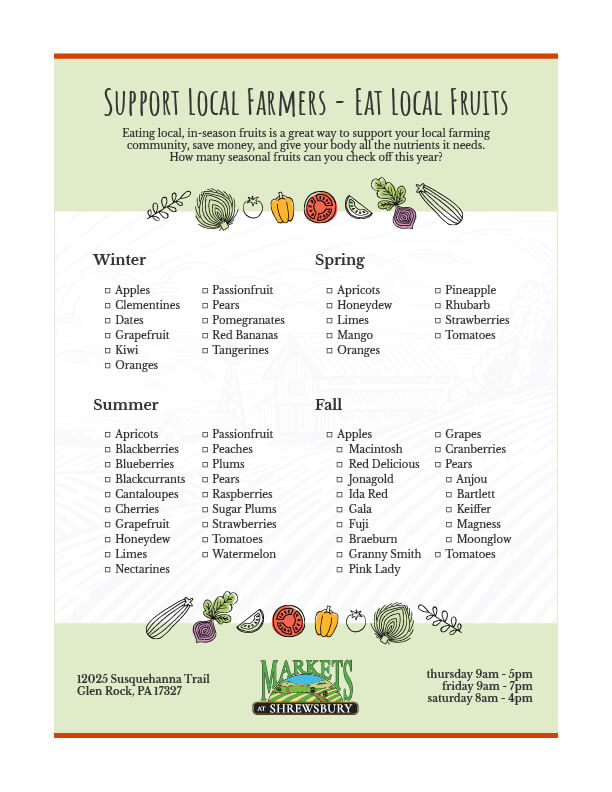
This blog was originally published on November 27th, 2019, and has been updated on December 8th, 2023.




